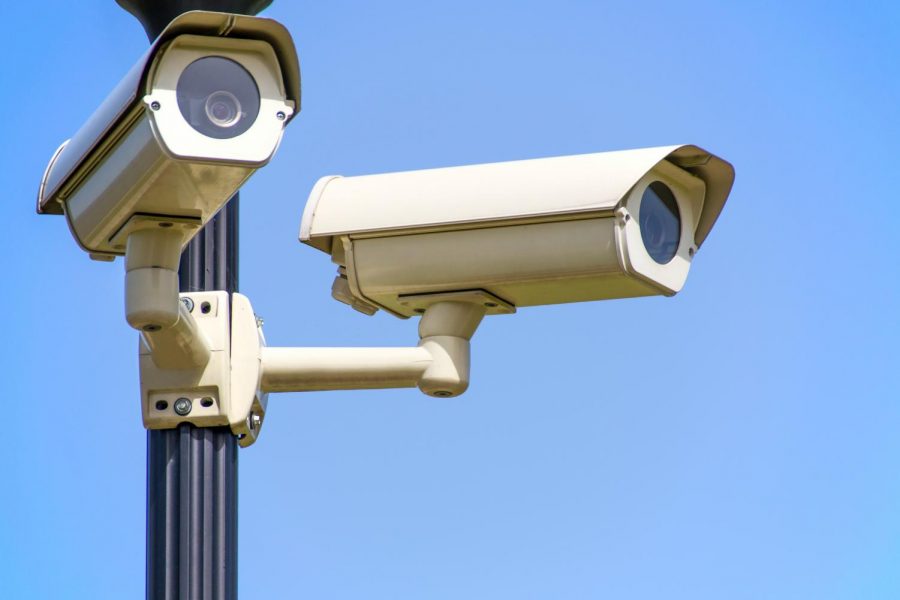Anti-Facial Recognition Technology: How Makeup and Masks Can Protect Us
August 11, 2020
If you, like me, have a smartphone that uses facial recognition to unlock, it’s likely that you’ve run into issues with the technology. Maybe your phone doesn’t recognize you when you are wearing a mask in public or if you’ve done a full face of makeup. Slight alterations to our physical appearance can affect how artificial intelligence, or AI, processes our facial features and identifies us. On the surface, this doesn’t seem like a big issue. However, while having to manually unlock your phone may be a slight inconvenience, it’s just the tip of the iceberg. It is a small piece of the nationwide conversation we are having about technology, privacy and public safety in regards to facial recognition.
In June, after the death of Bernardo Palacios-Carbajal and during protests in Salt Lake City, I stumbled across a now deleted TikTok where a makeup artist described how to apply a prosthetic to the bridge of her nose to thwart facial recognition technology, subtly hinting that it could be a useful tool to protestors. It was the first video I had seen exploring makeup as a strategy for protection of privacy, as public spaces continue to largely be governed by cameras, social media and artificial intelligence, and my curiosity in the techniques grew.
In an interview posted on the AP Archive YouTube page in March of 2020, two members of a UK group called the Dazzle Club apply full faces of anti-facial recognition makeup before silently protesting on the streets of London. Co-founder Georgina Rowlands’ face is bisected by narrow white and blue triangles of paint, while co-founder Anna Hart’s features are transformed into a Picasso-like canvas with wild red and orange shapes. Dazzle Club’s purpose is to foster conversations in the UK around what Hart describes as the “rampant surveillance of our public space.” The members of the group organize silent walks through certain parts of the city in faces of this makeup style dubbed CV Dazzle, short for ‘Computer Vision.’ The members test new looks against the recognition on their own smartphones before they go out in public.
The CV Dazzle community is alive and well — their website is up to date with new camouflage techniques. Current anti-recognition techniques go beyond just colored face paints, but include angular jewels along cheekbones, choppy hair extensions draped across the forehead and shading of certain colors all to distort a certain face. The website notes that many of these looks were developed almost a decade ago against a specific algorithm for facial recognition, but illustrates certain tips to defy facial recognition software no matter how advanced the algorithms become. These include obscuring defining features like the nose bridge or eyebrow ridge, experimenting with shading and colors to change how light affects the face and including asymmetry in the design to further throw off recognition of a face.
CV Dazzle’s list of tips previously advised against mask-wearing, given that before the pandemic masks were not a part of mainstream American culture and even illegal in some major cities. However, one YouTuber explains how an increase in mask compliance is affecting AI and facial recognition. In her video “Does Facial Recognition Work On Face Masks,” which was posted in May, Jordan Herrod explains how mask-wearing isn’t stopping AI recognition technology, but just slowing it down. Current facial recognition algorithms have been trained to work with full faces, but Harrod notes that it will soon be easy to recognize people by the top half of their faces. “The top half of your face is just as unique as the bottom half,” she said, implying that varying characteristics of the eyes and the forehead will be enough for sophisticated algorithms. She adds that because both facial-recognition-based surveillance and a culture of mask-wearing are more common in China than in the United States before the pandemic, so international developers have likely been working on AI systems that would make mask-wearing irrelevant to facial recognition.
In Utah, however, these concerns are very real, especially as protests and concerns around policing rise. For context, the Salt Lake Tribune reported in February that a majority of Utahns approve of law enforcement using facial recognition to search driver’s license databases. Beyond our state, The Hill reported in June that tech giant IBM would stop their use of facial recognition technology after growing concern that protesters would be targeted. In the wake of that move, Microsoft is scaling back on their facial recognition AI and have maintained their ban on selling the technology to police departments.
I acknowledge that many of these conversations around facial recognition include topics beyond my scope, including the ethics of contact tracing during COVID-19, how developers will market these new technologies and the use of social media tools in public spaces. However, I recognize that I need to take part in these conversations around mask-wearing, privacy and makeup as a tool of defiance beyond attempting to get Face ID to recognize me in a mask.








